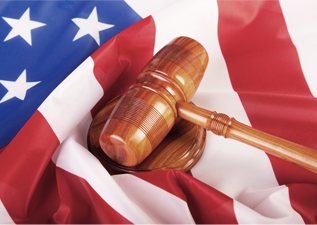Personal Injury Lawyer | Middlesex, Monmouth, Union, & Ocean County, NJ
Personal Injury Attorney Serving Middlesex, Monmouth, Union, Ocean, NJ
What is Personal Injury Law?
Robert Goldstein offers over 41 years of experience working with any and all types of personal injury law matters throughout Middlesex, Monmouth, Union, and Ocean County, NJ. Personal injury law refers to the legal remedies and defenses involved in civil lawsuits brought as a result of wrongful conduct. In fact, the word “tort” comes from a Latin term meaning twist, wrong, or harm. In contrast to criminal law, a tort action does not involve the government prosecuting the wrongdoer. Rather, these cases involve a private plaintiff seeking compensation (usually money) for the harm caused by the defendant’s actions.
Most personal injury cases are based on the doctrine of negligence. In essence, negligence is a failure to exercise, in the given circumstances, that degree of care for the safety of others, which a person of ordinary prudence would exercise under similar circumstances. It may be the doing of an act which the ordinary prudent person would not have done, or the failure to do that which the ordinary prudent person would have done, under the circumstances then existing.
There are many situations in which another’s negligence can cause harms and losses to someone. Examples are motor vehicle collisions, slip or trip and fall accidents, complications resulting from a physician’s carelessness, and other forms of professional carelessness. In each instance, the responsible party ignored the risk posed to others, and as a result, the plaintiff was injured.
Once negligence has been established in a personal injury case, the defendant may be called upon to pay the plaintiff for all of the harms and losses caused by the defendant’s actions. Certain types of damages are easy to calculate, such as property damage and medical bills. For other types, such as emotional distress and loss of earning capacity, expert testimony may be required. Punitive damages, meant to punish and deter particularly egregious conduct, may also be available in certain situations.
When initiating a tort action, identifying the proper defendants is very important. This is because the “tortfeasor” who directly harmed the plaintiff – be it a delivery driver, nurse, grocery store clerk, or other individual – may not have the sufficient insurance coverage or other financial resources to pay the fair value of the harms and losses suffered by the plaintiff. An experienced injury attorney can identify and make claim against additional parties who are liable based on their relationship to the tortfeasor, such as a landlord or employer.
Common Torts and Defenses: Protecting your Personal Injury Rights in New Jersey
Personal injury law encompasses a number of causes of action besides negligence. Many of these fall under the umbrella of intentional torts. As the name suggests, in these situations the defendant acts purposefully to harm the plaintiff. Examples include assault, battery, false imprisonment, libel and slander, trespass, theft, and infliction of emotional distress.
On the opposite end of the tort spectrum, there are scenarios in which defendants will be liable even though they did everything possible to avoid causing the harm. This is referred to as strict liability. The law will hold a defendant strictly liable if someone is hurt while the defendant is engaging in a highly dangerous activity, even if the activity is legal and all precautions are taken. Building demolition and transporting hazardous materials may fall into this category. There is also strict liability in New Jersey for the owner of a dog that bites someone.
Another common tort involves injuries caused by defective products. Liability in these cases can be imposed based on a theory that the manufacturer acted negligently by designing and selling an unsafe product. Or, if certain elements are met, plaintiffs hurt by a defective product may be able to sue under a strict liability theory. Either way, product liability cases have the potential to become large class action lawsuits, involving many plaintiffs and enormous money judgments.
To defend against personal injury liability, defendants tend to rely on a few common defense theories. In negligence cases, the defendant may argue that the plaintiff did not use due care, and is partially or wholly responsible for his or her own injury. The defendant may also claim that the harm that plaintiff attributes to the defendant’s negligence is actually the result of a pre-existing or degenerative condition. It is very common for the defense to hire doctors who make this contention in almost every case.
Retaining competent, knowledgeable legal counsel is essential where someone seeks recovery for the harms and losses that he or she has suffered because of the wrongful conduct of another. Lawsuits are complex and the demands involved in prosecuting lawsuits are rigorous. Retaining an attorney will also help avoid the unfortunate circumstance of missing a statute of limitations (that is, missing the deadline for filing the lawsuit), which is always a concern in personal injury cases.
Information Provided By HG.org and Edited By Robert Goldstein
Are you looking for an experienced Personal Injury Attorney?
Call (732) 972-1600 today to speak to one of our skilled Divorce & Family Law Attorneys, or Contact Us via our contact form. Located in Manalapan (Monmouth County, NJ), Cranford (Union County, NJ) and Midtown Manhattan (New York, NY); Robert Goldstien represents clients throughout the State of New Jersey & New York including but not limited to Mercer, Middlesex, Monmouth, Essex, Somerset, Morris, Hudson, Union, and Ocean counties.
Manalapan NJ is not the only community we serve, we also provide services for all of Monmouth County including but not limited to:
Personal Injury Law Services for Colts Neck NJ
Personal Injury Law Services for Farmingdale NJ
Personal Injury Law Services for Red Bank NJ









